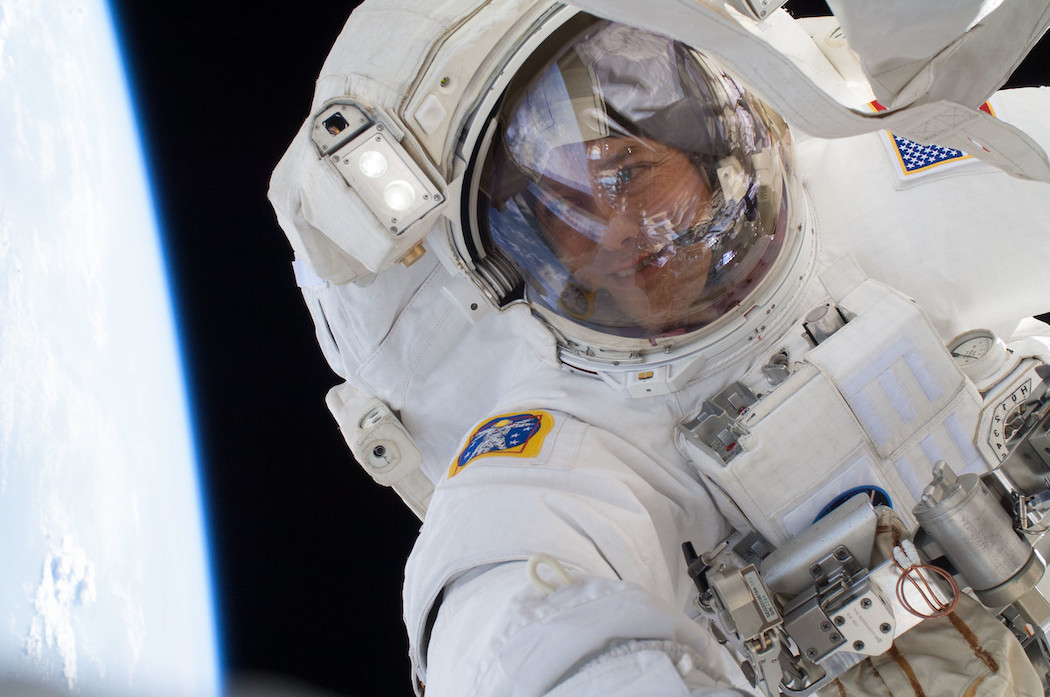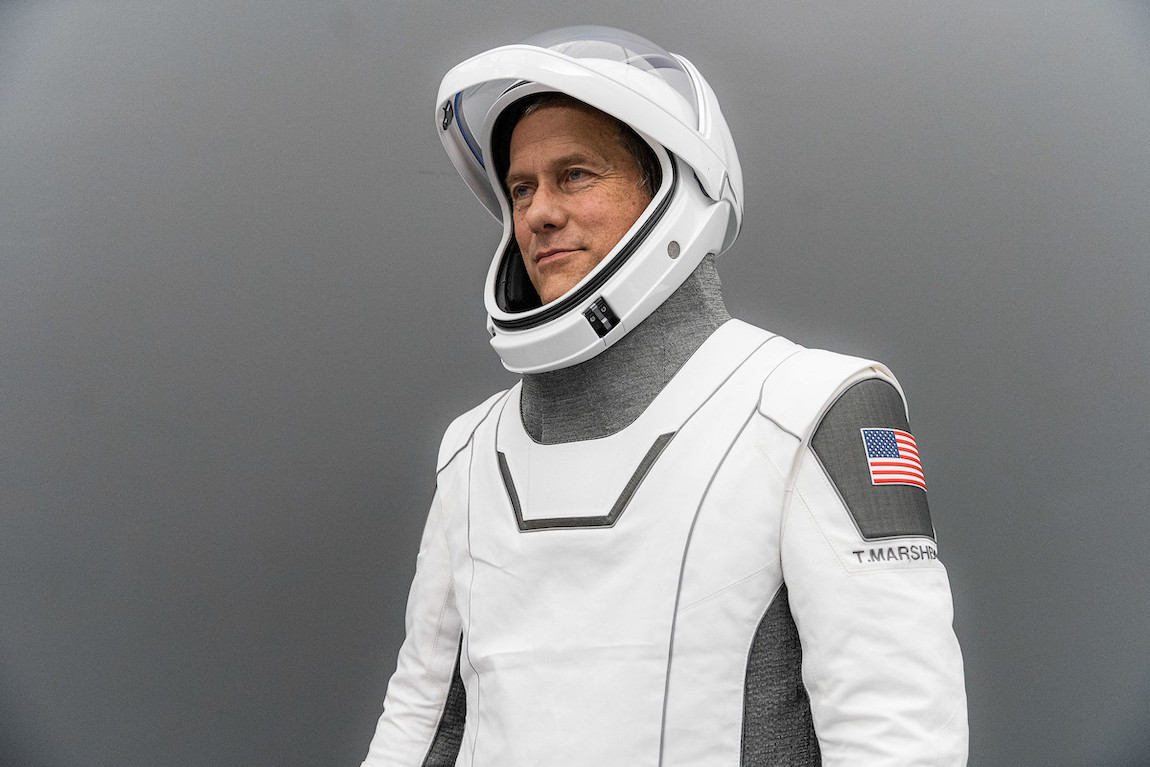Space News & Blog Articles
Tom Marshburn brings extensive spaceflight experience to Crew-3 mission
NASA astronaut Tom Marshburn, a medical doctor and veteran of launches on the space shuttle and Russia’s Soyuz spacecraft, joins three rookie space fliers on SpaceX’s Crew Dragon “Endurance” poised for liftoff on mission to the International Space Station.
The 61-year-old astronaut has logged 161 days in space on two previous missions. Marshburn is ready to more than double his time in space on his next six-month stint on the space station.
Marshburn will join a short but growing list of astronauts who have launched from Earth on three different types of rockets and spacecraft. He’s confident in SpaceX’s reliability after the company has strung together more than 100 consecutive successful launches of its Falcon 9 rocket family.
“There’s actually a huge flight history because this is the same Falcon that’s been launching the cargo vehicles, so I thin they’ve proven themselves,” Marshburn told Spaceflight Now in a pre-launch interview. “That’s not to say that it’s risk-free. Even a Soyuz that’s done so many launches is not risk-free.”
He will serve as pilot of the Crew Dragon Endurance spacecraft, a brand new vehicle in SpaceX’s fleet of reusable crew ferry ships. In that role, Marshburn will assist NASA commander Raja Chari in overseeing the spacecraft’s systems during the trip to the space station.
If all goes according to plan, the flight to the station will be automated. Chari and Marshburn are trained to take over and manually fly the capsule if something goes wrong.
Chari, mission specialist Kayla Barron, and European Space Agency astronaut Matthias Maurer are each making their first trip into orbit.
Marshburn’s advice for his rookie crewmates? Take it slow as you experience microgravity for the first time.
About a third to half of astronauts who fly in space experience symptoms of space motion sickness, which can include nausea, loss of appetite, headaches, and in rarer cases, vomiting. The effects are caused by fluid shifts inside the body and neurovestibular changes triggered when a person reaches the weightless environment of space.
“I think the first thing is you’re going to be really super excited, and you’re going to want to hop out and enjoy this new environment,” Marshburn said. “So just take it easy, keep your head still.
“Then, when you’re on the space station, they’re going to have time to get fast and efficient,” he said. “You just need a little time for your inner ear to catch up to the new environment and what’s going on.”
 Astronaut Tom Marshburn outside the International Space Station during a spacewalk on May 11, 2013. Credit: NASA
Astronaut Tom Marshburn outside the International Space Station during a spacewalk on May 11, 2013. Credit: NASA
Marshburn said he is “hugely impressed” with his crewmates.
“Raja, in particular, he comes from his operational background, and you read his resume … my goodness.”
Chari is a colonel in the U.S. Air Force, and commanded flight test operations of the F-35 fighter jet at Edwards Air Force Base when he was selected to join NASA’s astronaut corps in 2017.
“He, in my mind, really does demonstrate all the qualities that you’d want in a commander,” Marshburn said. “His technical knowledge of that Dragon is beyond comparison for an astronaut on the outside coming in and soaking up as much as they can.”
“I really have learned a lot from him,” Marshburn said. “I’ve been to space before, but I’m learning from him and my crewmates quite a bit.”
Chari said Marshburn’s presence on the crew has been “hugely beneficial” during training.
He’s seen life in a small capsule,” Chari said. “He’s seen life on a larger machine in the shuttle. He’s seen life for a long-duration on the ISS. So he’s got that wide breadth of experience to help inform our training.”
NASA selected Marshburn in the agency’s 2004 astronaut class. He flew to the space station as a mission specialist on the space shuttle Endeavour’s STS-127 mission in July 2009, and accomplished three spacewalks to position spare parts and perform maintenance on the output.
Marshburn launched on his second flight on Dec. 19, 2012, aboard Russia’s Soyuz TMA-07M spacecraft. On that mission, Marshburn spent nearly 146 days in orbit as a member of the space station’s long-term Expedition 34 and 35 crews.
The Crew Dragon Endurance spacecraft is scheduled to blast off from NASA’s Kennedy Space Center in Florida at 1:10 a.m. EDT (0510 GMT) Wednesday. The launch atop a Falcon 9 rocket was delayed from Sunday to avoid bad weather in downrange abort zones in the Atlantic Ocean.
If the launch happens Wednesday morning, the Crew Dragon capsule is scheduled to dock with the space station’s Harmony module around 11 p.m. EDT (0300 GMT), around 22 hours after liftoff.
The mission, designated Crew-3, is SpaceX’s third operational crew rotation flight to the space station. They will replace the four-person team of Crew-2 astronauts who arrived at the space station in April on SpaceX’s Crew Dragon Endeavour spacecraft.
The Crew-2 mission is scheduled to return to Earth around Nov. 8 for splashdown off the Florida coast, while the Crew-3 astronauts will remain in orbit until next April, when SpaceX’s Crew-4 mission will arrive to replace them.
Marshburn and his crewmates will work alongside three other space station crew members who flew to the complex on Russian Soyuz vehicles — cosmonaut Anton Shkaplerov, Pyotr Dubrov, and NASA astronaut Mark Vande Hei.
 NASA astronaut Tom Marshburn in his custom SpaceX flight suit. Credit: SpaceX
NASA astronaut Tom Marshburn in his custom SpaceX flight suit. Credit: SpaceX
During his time on the station, Marshburn is likely to head outside the complex for at least one spacewalk before the end of the year to work on the lab’s S-band communications system. More spacewalks are scheduled early next year, but NASA has not finalized crew assignments for those excursions.
The space station crew will also welcome two arriving spacecraft with non-professional astronauts. A Russian Soyuz mission is due to dock in December with Russian cosmonaut Alexander Misurkin and two Japanese space tourists, and a SpaceX Crew Dragon capsule is scheduled to arrive in February with former NASA astronaut Mike Lopez-Alegria three paying passengers flying under contract with the Houston-based company Axiom Space.
Both missions will be commanded by experienced space fliers, unlike the all-civilian Inspiration4 mission that flew to orbit on a three-day flight in September aboard a SpaceX Crew Dragon spacecraft. Inspiration4 did not dock with the space station.
Marshburn doesn’t expect the space tourist missions will disrupt the research and maintenance work on-board the station.
“We’ve been planning so that they can get their work done and we can get our work done,” he said. “Certainly, I would expect that for somebody who’s never been to space, if they needed a hand, I could lend a hand … That’s actually NASA’s plan with our schedule to allow a little bit of time for that.
“We’ve seen the training,” Marshburn said. “We’ve met them all. They’re great folks. They’re passionate about what they’re doing. They want to help. They want it to be successful for the whole station, and for their whole mission.
“I don’t think it’ll be a challenge, but we’re up to the challenge if there is. We’re learning for what’s going to be coming as more and more private astronauts and spaceflight participants fly up.”
Marshburn was born in Statesville, North Carolina, and graduated high school in Atlanta. He warned a bachelor’s degree in physics from Davidson College and a master’s degree in engineering physics from the University of Virginia, then attended medical school at Wake Forest University.
After earning his medical degree in 1989, Marshburn worked as a LifeFlight physician and an emergency room doctor, then joined NASA in 1994 as a flight surgeon at Johnson Space Center in Houston.
Before becoming an astronaut, Marshburn served as a flight surgeon at mission control for several space shuttle missions and for the Shuttle/Mir program, when NASA astronauts lived and worked on Russia’s Mir space station in the late 1990s.
Marshburn will be the resident physician on the International Space Station during his six-month stay, overseeing medical equipment and offering first aid to his crewmates, if necessary.
“Space is hard on the eyes, so we have he capability of getting something out of the eye, dealing with a corneal abrasions with stuff floating around,” Marshburn said. “Space is hard on the hands. Our hands are like our feet. So abrasions, strains, sprains in the hands. We have the ultrasound.
“If we came down to it, we have a table, an electrical isolation table. We can really get a patient down, we can defibrillate. We can do a run of advanced life support. We have the medication, the IV access, the ability to support the airway — all of the really serious advanced stuff than an EMT would have to do, say, to get somebody transported to a hospital. We can do that for a limited amount of time.”
This email address is being protected from spambots. You need JavaScript enabled to view it. the author.
Follow Stephen Clark on Twitter: @StephenClark1.
When you subscribe to the SpaceZE News Feed, we will send you an e-mail when there are new updates on the site so you wouldn't miss them.

